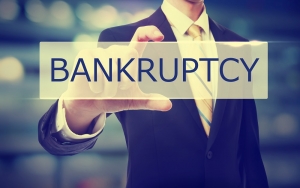How often can I file bankruptcy in Arizona?
 In times of excessive debt, people file for bankruptcy. Despite the efforts of the court to teach people about debt through education classes that are required when filing bankruptcy, some people don’t learn. Some people may also be hit with circumstances that are beyond their control, and multiple bankruptcies may be the only way out. Whatever the reasoning, a debtor has to understand what they are allowed to do under Arizona bankruptcy laws.
In times of excessive debt, people file for bankruptcy. Despite the efforts of the court to teach people about debt through education classes that are required when filing bankruptcy, some people don’t learn. Some people may also be hit with circumstances that are beyond their control, and multiple bankruptcies may be the only way out. Whatever the reasoning, a debtor has to understand what they are allowed to do under Arizona bankruptcy laws.
Chapter 7 and Chapter 13
Arizona state residents are legally allowed to file a Chapter 7 bankruptcy every eight years. The eight-year timeframe begins with the filing date of the previous bankruptcy. Chapter 7 offers debt relief in the form of discharge, except for child support arrearages, alimony, tax debts, and student loans. Most of the debtors who require filing a Chapter 7 have amassed a high amount of credit card debt, medical bills, or both.
You can file for Chapter 13 bankruptcy at any time under Arizona bankruptcy laws. The only waiting period is two years from the discharge of the previous Chapter 13. This opportunity allows for residents of Arizona to prevent foreclosures by restructuring their debts to make lower payments. Chapter 13 allows debtors to keep their credit scores intact by not discharging the debt, which can be detrimental to credit scores with Chapter 7.
Multiple Chapter 13 filings are not an uncommon occurrence in the state of Arizona, but multiple Chapter 7 filings may get turned down because judges feel that multiple Chapter 7 filings are people abusing bankruptcy laws. Catastrophic financial situations are often admissible for multiple Chapter 7 filings. After filing a Chapter 13, you cannot file for a Chapter 7 for six years.
Click here for an article on multiple bankruptcy filings.
Managing Your Debt with Bankruptcy
One way that people often handle their debt is by filing Chapter 7 and discharging their unsecured debts. Unsecured debts are those that have no collateral tied to them. After the discharge, the debtor will turn around and immediately file Chapter 13. By filing Chapter 13 bankruptcy, they are able to restructure their secured debts into payments that are lower and manageable.
Even though they will not be able to file again for quite some time, the combination of discharging and restructuring should help a debtor get back on their feet with their debts. This clean start may be what was needed in the first place and is not considered abuse of the system.
Finding a Bankruptcy Lawyer to Assess Your Needs
When you are overcome with the burden of debt, your first option should always be to talk to an expert. An expert attorney who handles bankruptcy in Arizona can help you decide what the best method of taking care of your debts will be. After handling multiple bankruptcy cases over the years, reputable and reliable legal counsel can help you make the right decision that will give you the fresh start you need.
Call an Arizona bankruptcy lawyer today to get a quote on your bankruptcy case and find out what option is best for you.





